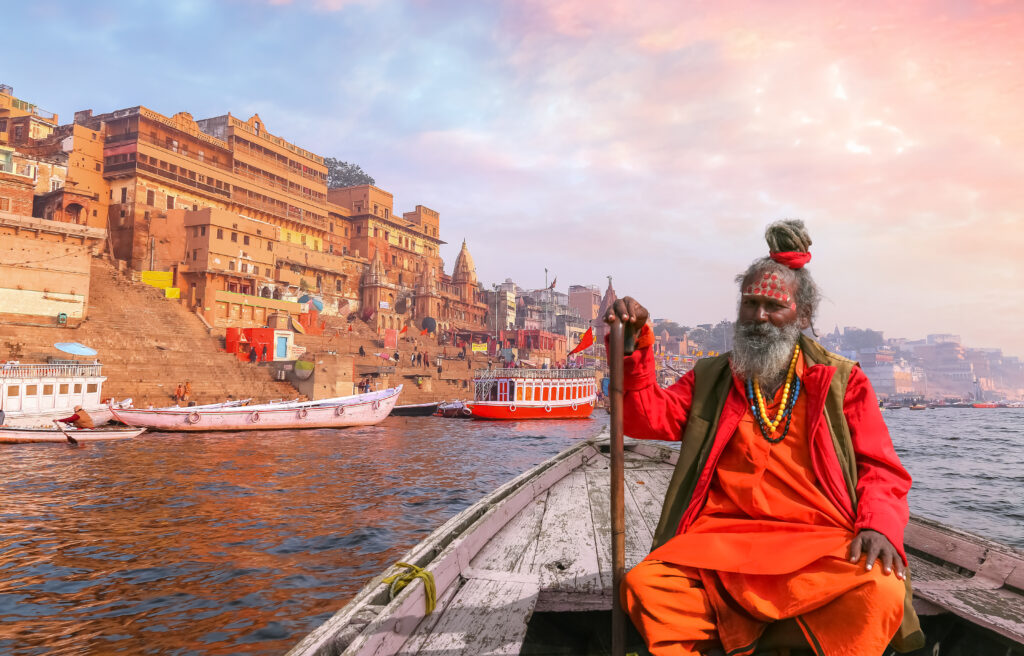
India, a land of a thousand colors and a thousand flavors, has fascinated travelers the world over for centuries. And for good reason: with its grandiose landscapes, bustling cities and rich, varied culture, India is a destination like no other. In this article, we invite you to discover northern India, a traditional region with many facets. From the majestic temples of Delhi to the snow-capped mountains of the Himalayas and the holy cities of Varanasi and Pushkar, northern India is full of treasures to discover. Whether you're a lover of history, spirituality, nature or gastronomy, you're bound to find what you're looking for in this fascinating region. So follow the guide and let yourself be carried away by the magic of India!
1. Agra and the Taj Mahal
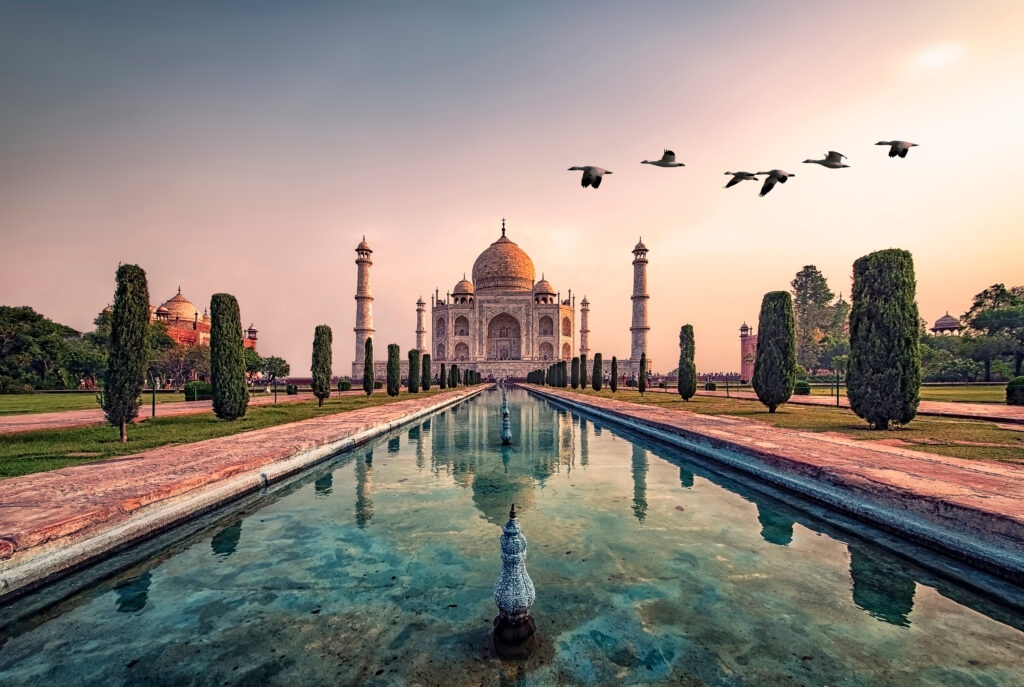
Agra is a must-see city on a trip to northern India, as it' s here that you'll see one of the world's most famous monuments : the Taj Mahal. Built in the 17th century by the Mughal emperor Shah Jahan in honor of his wife, the Taj Mahal is an architectural masterpiece of white marble, considered one of the finest examples of Islamic art in India. To make the most of your visit, we recommend an early-morning visit at sunrise to avoid the crowds. Agra is also home to the Red Fort, an imposing red sandstone fortress built by Emperor Akbar in the 16th century, and the mausoleum of Itimad-ud-Daulah, nicknamed the "Baby Taj" for its resemblance to the Taj Mahal.
2. What to do in North India Visit the Golden Temple in Amritsar
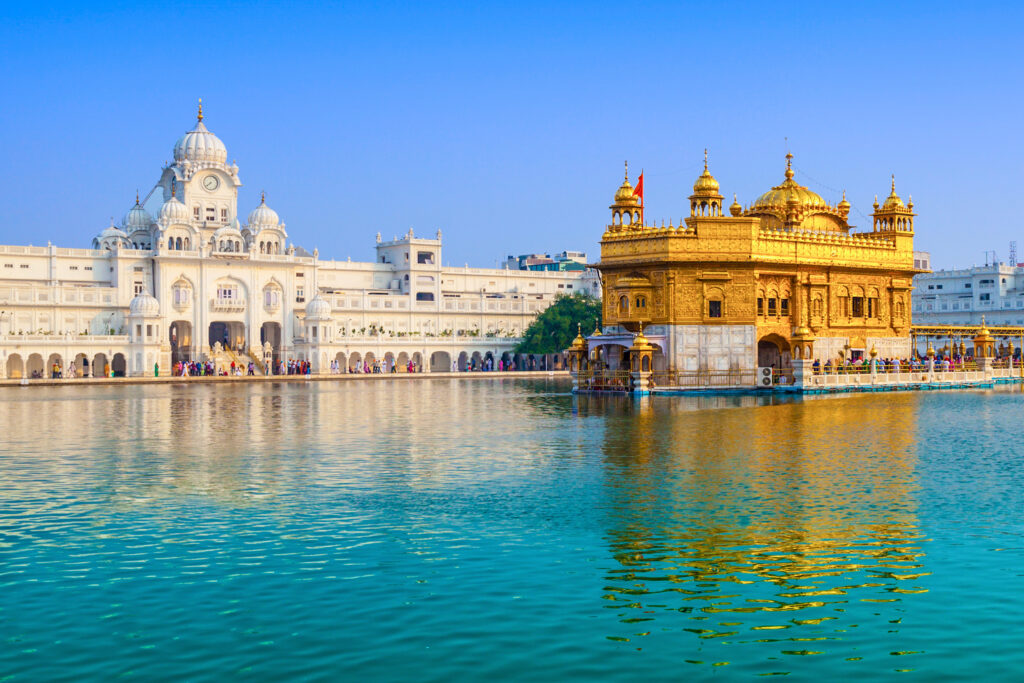
Amritsar is home to one of the most sacred sites in Sikhism: the Golden Temple, also known as Harmandir Sahib. This magnificent edifice, covered in gold leaf and built in the middle of a sacred water basin, is a place of pilgrimage for Sikhs from all over the world, who come here to pray and bathe in the sacred waters. Your visit to Amritsar will also include the Jallianwala Bagh, a public garden that was the scene of a massacre perpetrated by British colonial troops in 1919, and the Partition Museum, which traces the history of India's Independence from Pakistan in 1947. Amritsar is also an ideal place to witness the Indo-Pak border closing ceremony, a spectacle that takes place to the cheers of the crowd.
3. Jaipur, the pink city
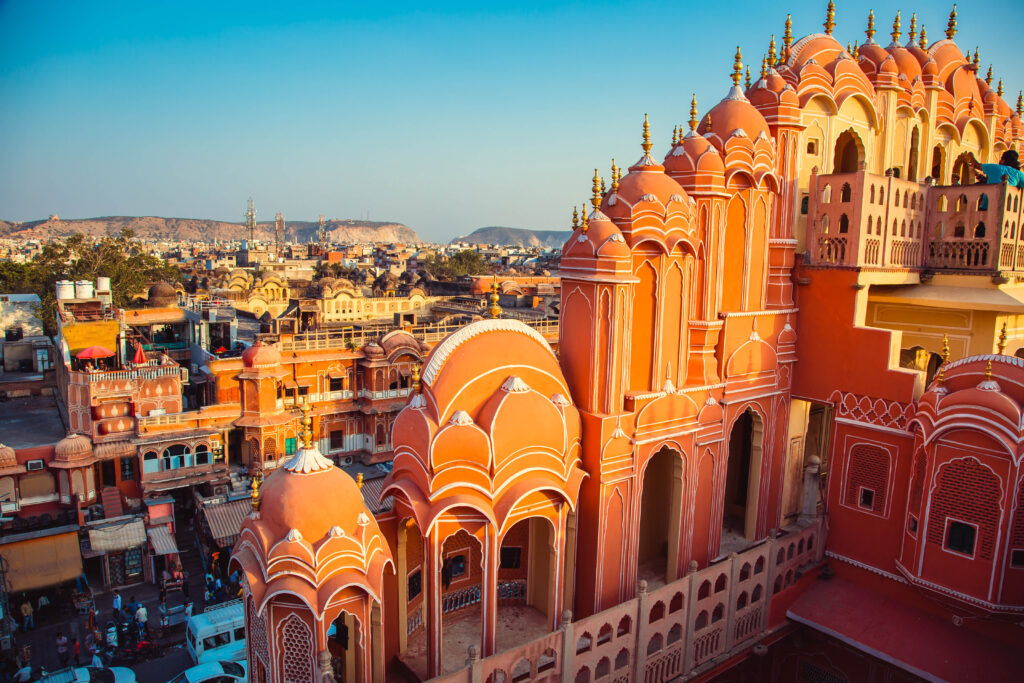
Capital of Rajasthan, the region of the maharajas, Jaipur is nicknamed "the pink city" because of the salmon-pink color of its buildings, which gives it a unique and charming atmosphere. Jaipur's handicrafts and heritage will leave no traveller indifferent. Highlights include the Palace of the Winds, a magnificent red and pink sandstone edifice built in the 18th century; Amber Fort, an imposing fortress on a hill outside the city; and the City Palace, a complex of palaces and courtyards that today houses a museum.
4. Pushkar
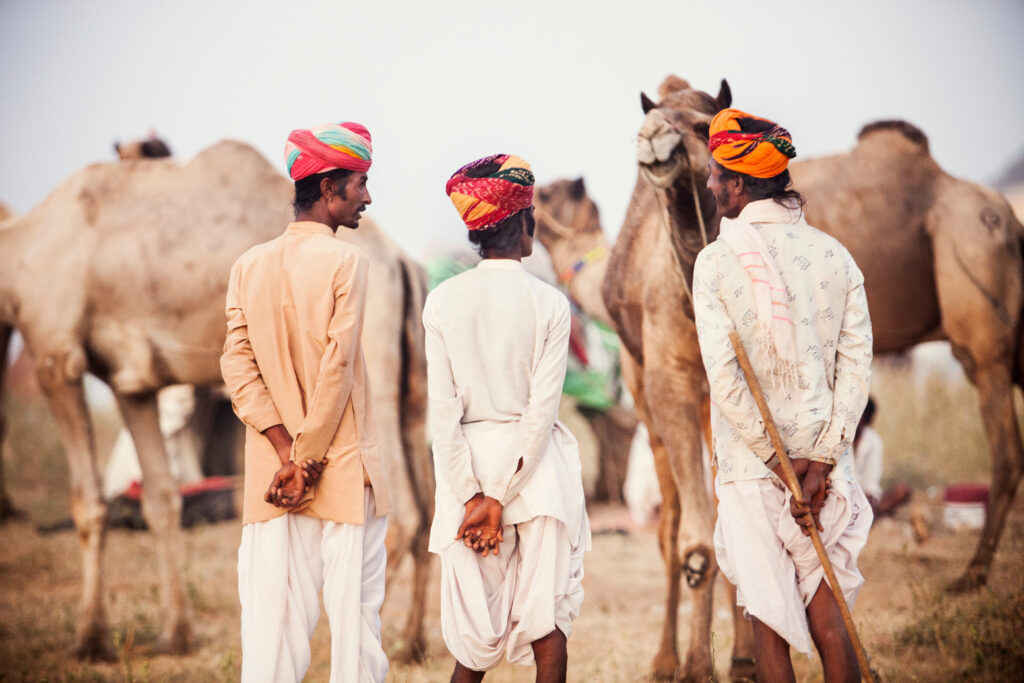
A major pilgrimage site in India, Pushkar is best known for its sacred lake, said to have been created by the god Brahma himself, and which attracts thousands of Hindu pilgrims every year to bathe in its waters. Chanting throughout the day and night creates a unique spiritual atmosphere. A holy Hindu city, Pushkar is 100% vegetarian. It's impossible to buy chicken or fish, and even eggs are hard to come by. Pushkar is also famous for its annual camel fair, which attracts breeders and traders from all over the country. For several days, the city is transformed into a gigantic camel market, where animals are sold, traded and decorated.
5. What to do in North India? Visit Khajuraho
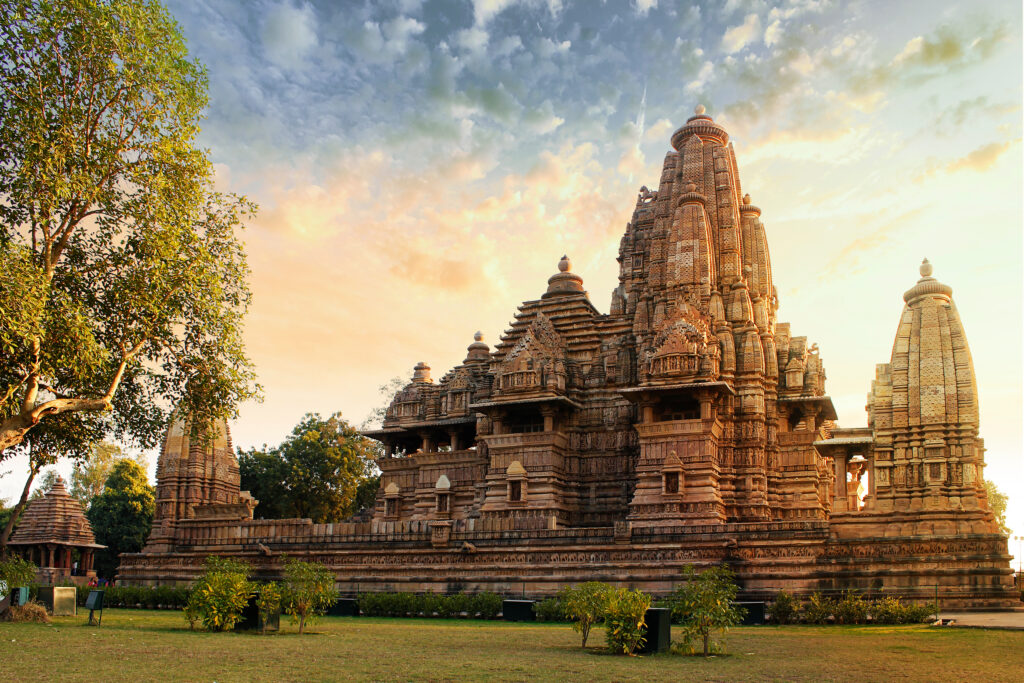
Travelers of all nationalities come to Khajuraho to admire its Hindu and Jain temples, built between the 10th and 12th centuries and considered masterpieces of Indian art. The temples of Khajuraho are famous for their erotic sculptures, inspired by the Kama Sutra, depicting scenes from daily life, as well as mythological and religious scenes. These sculptures are of great finesse and beauty, and have earned the Khajuraho temples UNESCO World Heritage status.
6. Spiritual India in Varanasi
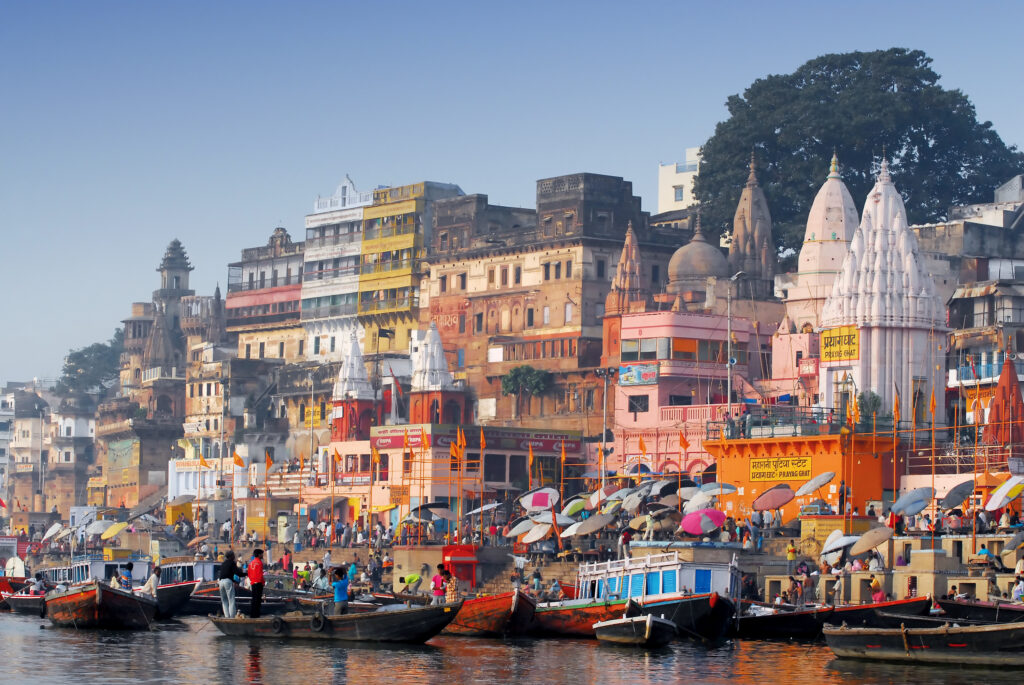
Considered one of the oldest cities in the world, Varanasi is one of the most beautiful places to visit in India. It is best known for its religious and spiritual importance in Hinduism (it is the holiest of the country's seven holy cities). The city is said to have been founded by Shiva, and every year welcomes millions of pilgrims and Hindus in the twilight of their lives who come here to die. Their bodies are then burned on large pyres and the ashes scattered in the Ganges. A visit to Varanasi is a unique and unforgettable experience, providing an insight into the spectacular culture, traditions and rituals of ancient India.
7. What to do in North India? Visit Bikaner
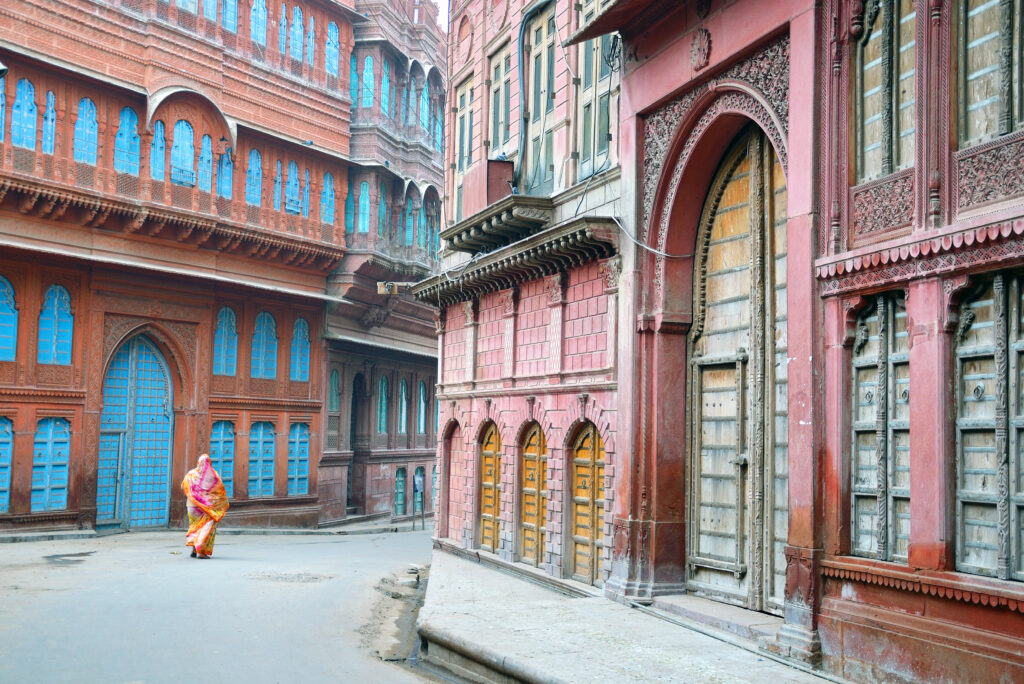
Junagarh Fort is one of Bikaner' s most emblematic monuments. Built in the 16th century, the fort is a remarkable example of Rajput architecture, and houses many sumptuous palaces and temples. A visit to the fort provides an insight into the history and culture of the region, as well as the architectural treasures of ancient India. Here, you won't find souvenir stores, but quiet lanes that evoke an India unconcerned with the outside world. Bikaner is also famous for its havelis, magnificent historic houses adorned with frescoes and sculptures that bear unique witness to the richness and diversity of Indian culture.
8. Jaisalmer
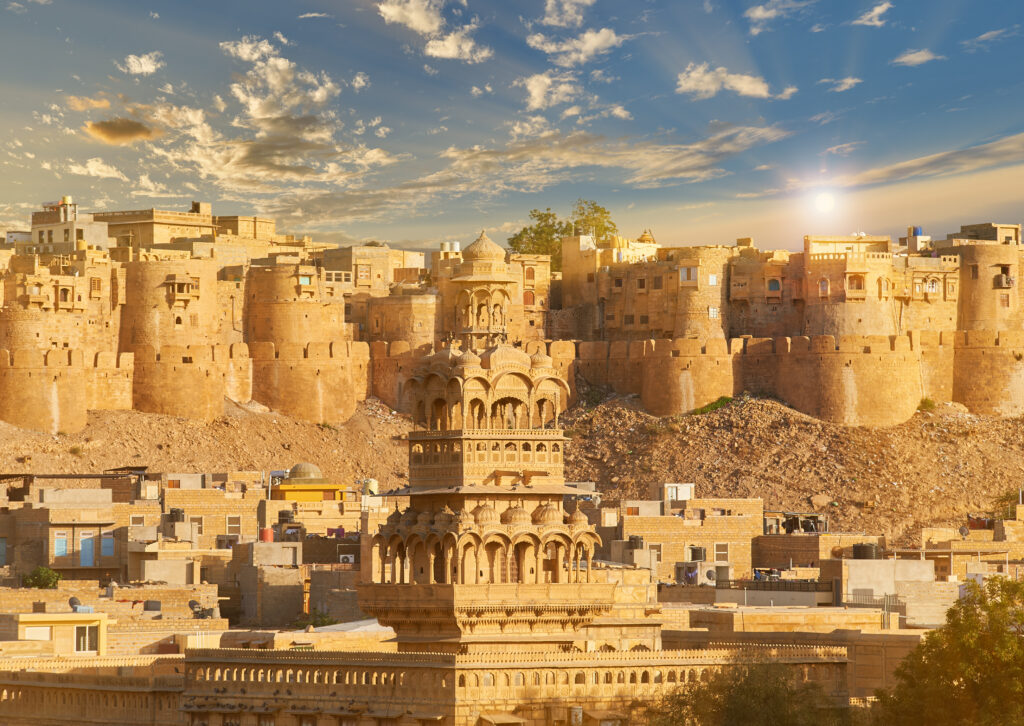
Jaisalmer, also known as the City of Gold, lies at the gateway to the Thar Desert, on the ancient silk, spice and opium routes. This fortified city boasts 99 bastions and its blond stone walls give it a unique and charming character. The golden fortress of Jaisalmer, overlooking the desert, is one of the city's most emblematic monuments. The fortress is a remarkable example of Rajput architecture, and houses many sumptuous palaces and temples. Jaisalmer's lively alleyways, untouched by motorized traffic, are home to countless architectural treasures, including palaces, havelis and Jain temples. The city is also renowned for its sand dunes, offering a unique experience of camel riding in the Thar Desert.
9. Meherangarh Fort, Jodhpur
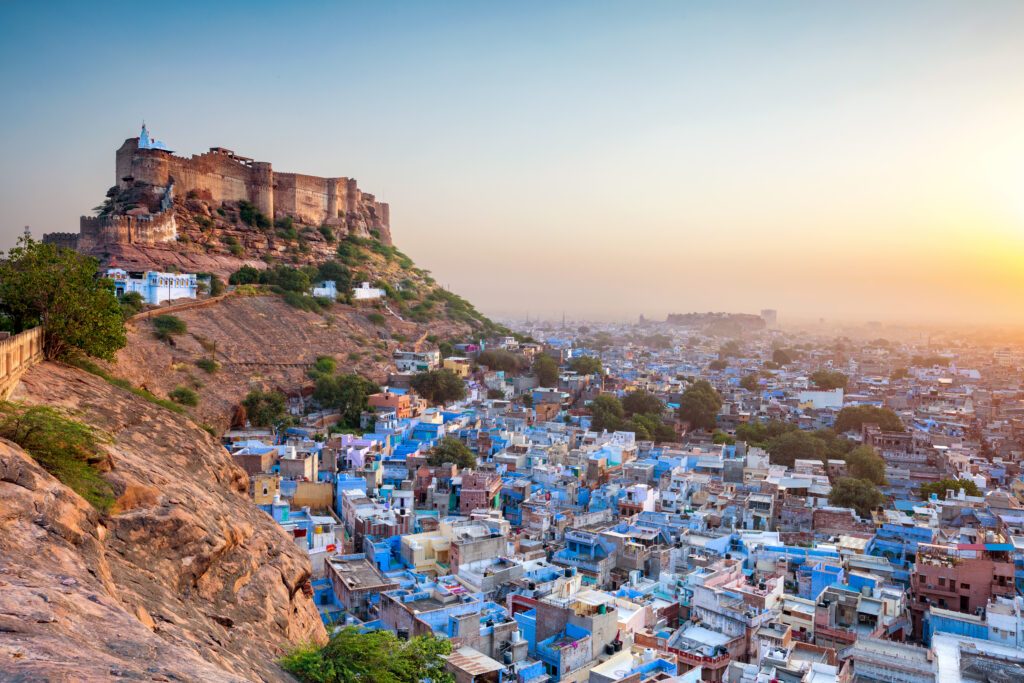
The traditional, bustling"Blue City " at the gateway to the Thar Desert is well worth a visit. Its magnificent fortress, the Meherangarh Fort, is the most beautiful in Rajasthan, standing atop a plateau overlooking the region. Jodhpur is also famous for its blue houses, whichgive it a unique and charming atmosphere, and for its lively market, where you can discover local crafts and sample Rajasthani culinary specialities. Despite the passing of a few auto-rickshaws, you'll discover a very traditional India, with medieval accents.
10. What to do in North India? Visit Udaipur
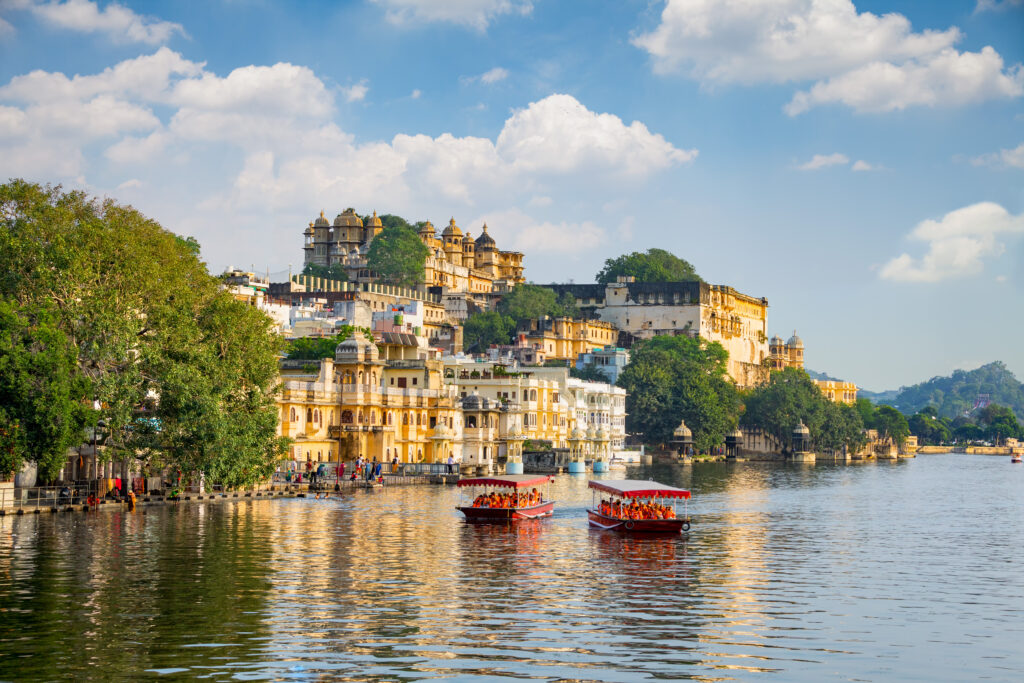
Nicknamed the Venice of the East, Udaipur is a charming lakeside city brimming with architectural treasures and the perfect setting for a romantic vacation. The City Palace is one of Udaipur's most emblematic monuments. This sumptuous palace is a remarkable example of Rajput architecture, and houses numerous temples and museums. For a unique experience, we recommend aboat trip on Lake Pichola . This ride offers breathtaking views of the city's palaces and temples. History buffs can also visit the Ahar Museum, home to an extraordinary collection of funerary monuments and memorials.
11. What to do in North India Visit the Ajanta caves
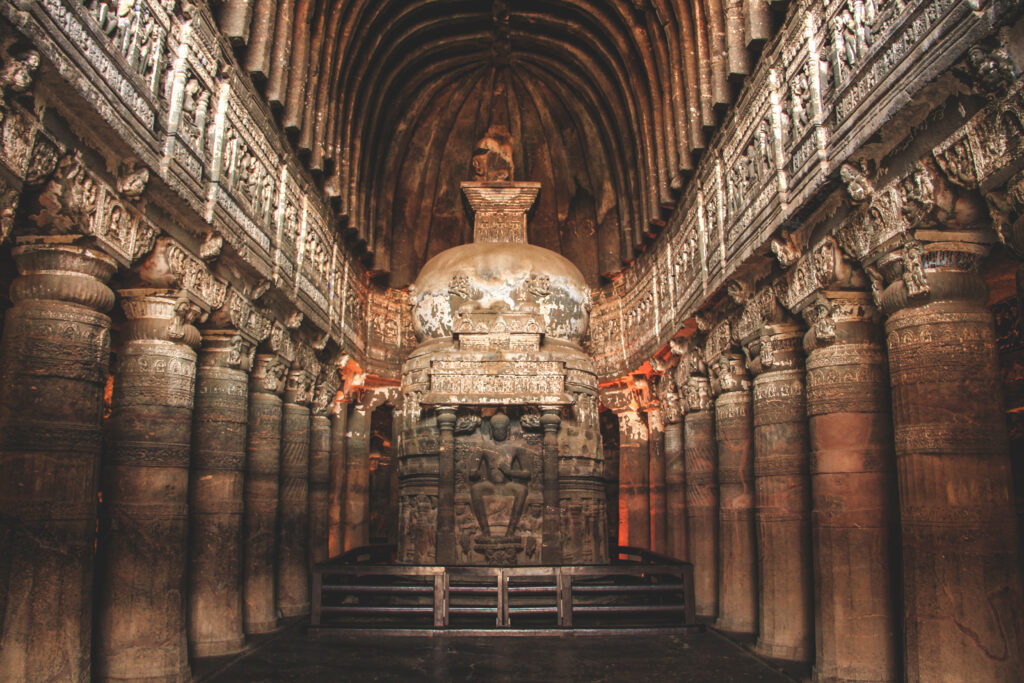
The Ajanta c aves, located near the Indian city of Hyderabad, are one of the world's most admired wonders of antiquity, a unique testimony to ancient architecture. Carved out of basalt between 200 B.C. and 650 A.D., these caves are a collection of 30 cavities that served as a refuge for monksduring the rainy season and as a space for meetings and prayers. Today, they are famous for their rare beauty, thanks to the frescoes, sculptures and statues that adorn the walls and ceilings, evoking the life of Buddha. The beauty of the site has earned it UNESCO World Heritage status since 1983.
12. Leh, the capital of Ladakh
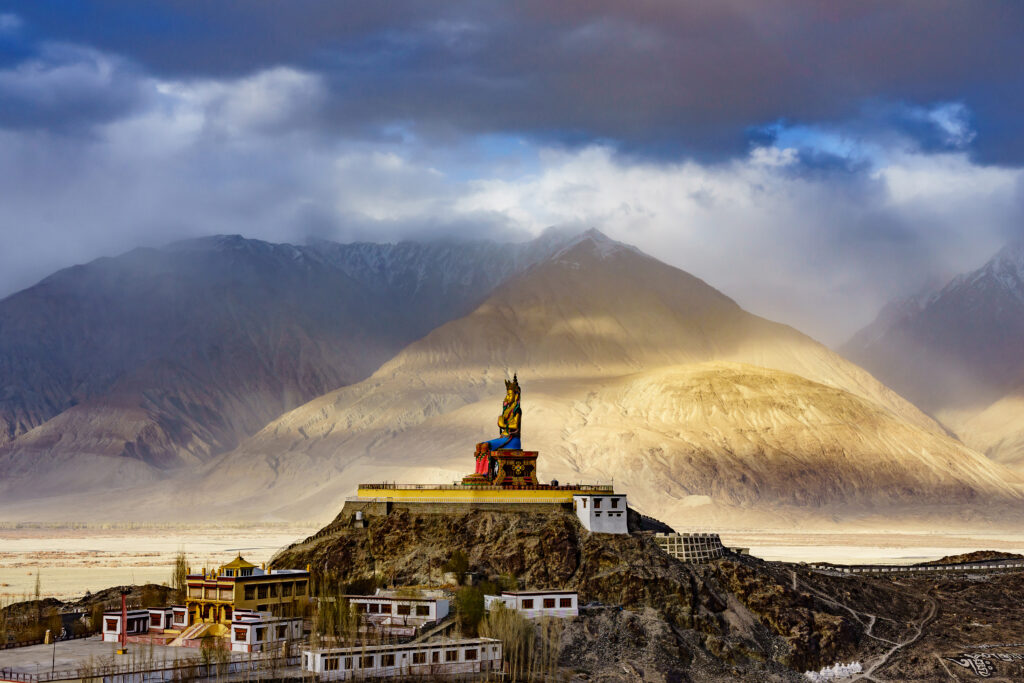
Surrounded by majestic mountains, Leh is renowned for its breathtaking scenery and Buddhist culture. A visit to Leh allows you to discover the region's architectural treasures, in particular the Buddhist monasteries, which are outstanding examples of Tibetan architecture. Thiksey Monastery , a few kilometers from Leh, is one of the region's most famous. It houses a two-storey-high statue of Buddha, as well as numerous murals and thangkas. Trekkers can also enjoy the surrounding mountains and valleys. Hemis National Park , for example, is an ideal place to observe the local flora and fauna, including snow leopards and ibex.
13. What to do in North India? Visit Ahmedabad
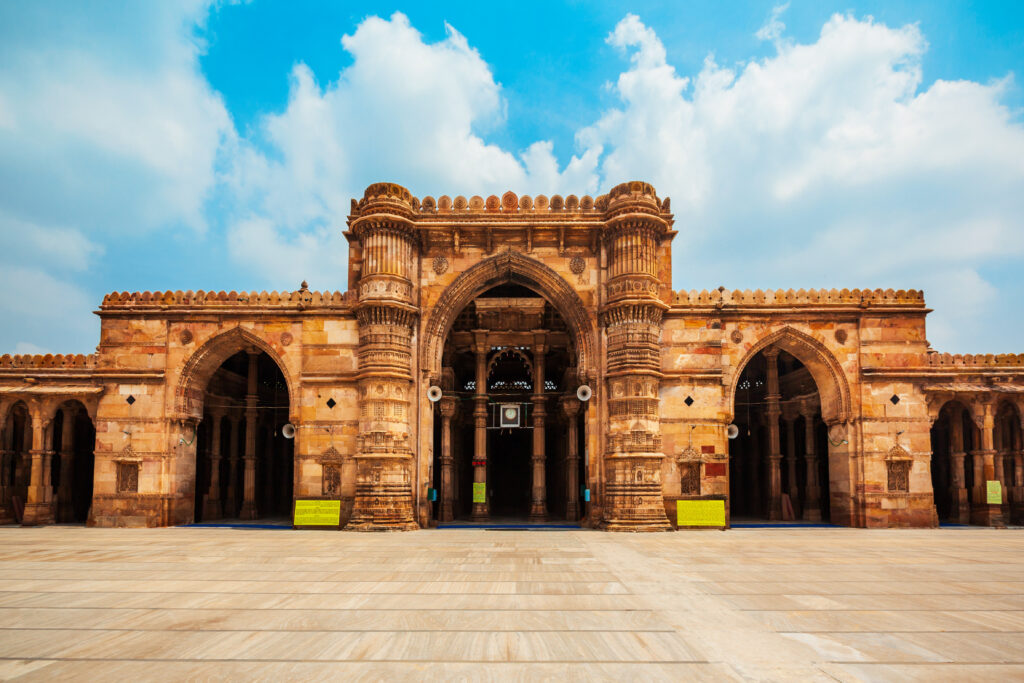
Ahmedabad , in the state of Gujarat, is renowned for its unique architecture, which blends Hindu, Islamic and Jain styles. Here you can admire the Jama Masjid mosque, one of the finest examples of Islamic architecture in India. Built of yellow sandstone, the mosque is decorated with intricate geometric and floral motifs. History buffs can also visit the Calico Textile Museum, which houses an impressive collection of traditional Indian fabrics and clothing. The city is also renowned for its vegetarian cuisine, which is influenced by the culinary traditions of Gujarat.
14. Chittorgarh Fort
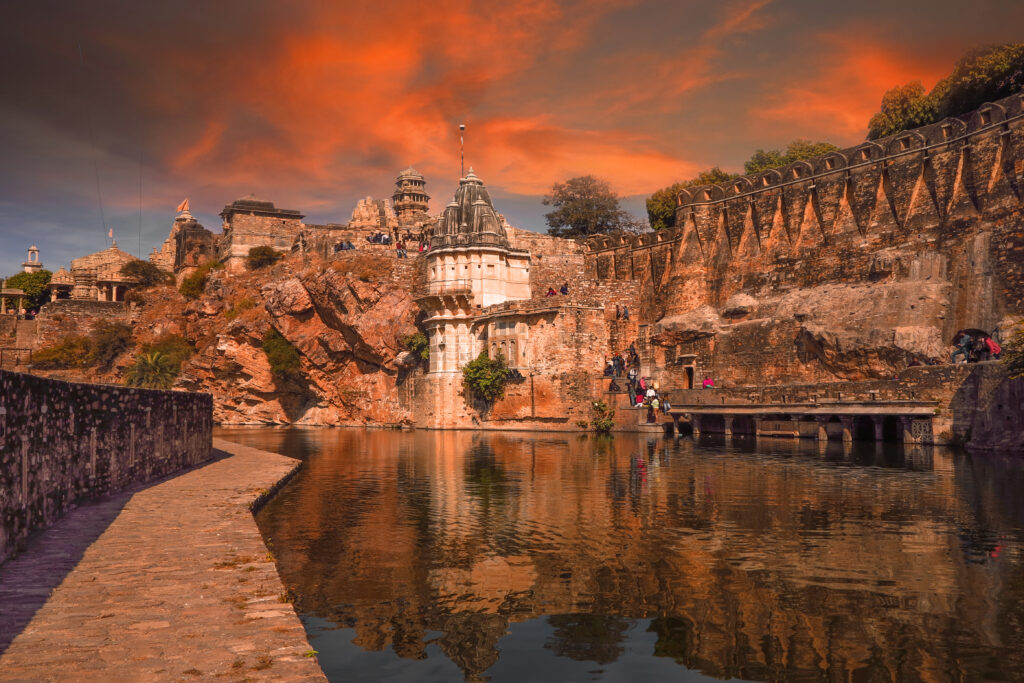
Chittorgarh is a city in the state of Rajasthan renowned for its majestic fort, one of the largest in India, and a testament to the region's history and culture. Surrounded by massive walls stretching for over 3 kilometers, the fort is home to numerous palaces, temples and towers. Be sure to visit the Rana Kumbha Palace, one of the fort's most famous, renowned for its sculptures and frescoes, as well as the Kumbha Shyam temple dedicated to the god Vishnu. The city is also famous for its Chittorgarh Festival, which celebrates the history and culture of the region and features dances and floats.
15. Bandhavgarh National Park
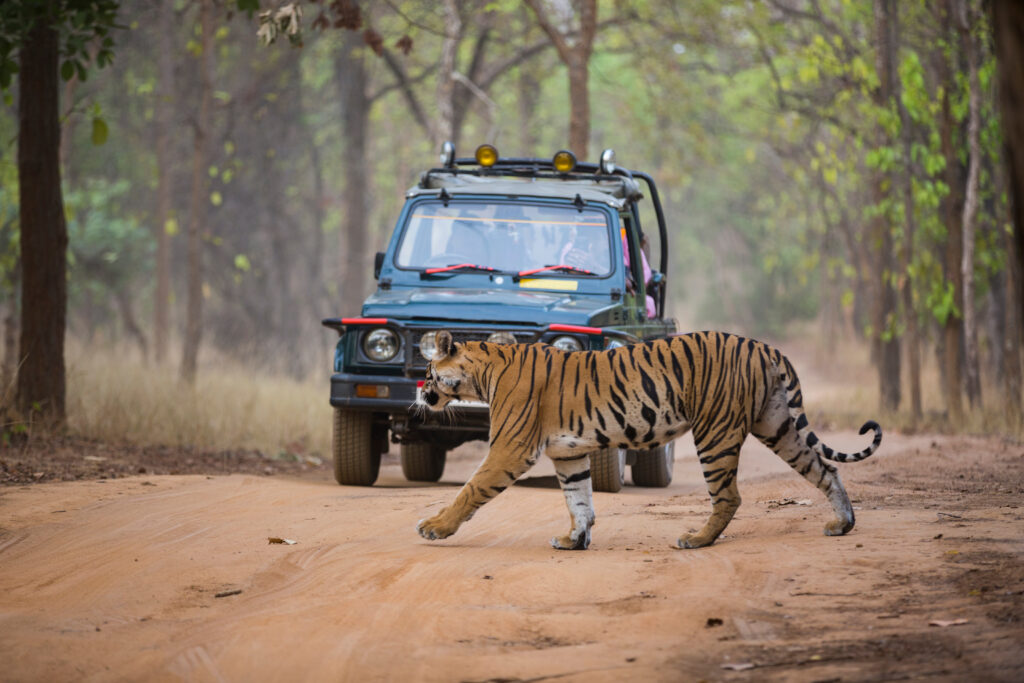
Considered THE national park to visit at least once in a lifetime by Indians, Bandhavagarh is one of the country's parks with the highest concentration of tigers and also one of the most beautiful in the country. In addition to tigers, the park is home to many other mammal species, including leopards, sloth bears, axis deer, small-headed blue-gray nilgaut antelope, sambar or barking deer, jackals, hyenas and Indian wolves. In 2023, the park counted just over sixty tigers, i.e. one tiger per 25 km², making it the highest tiger density in the world!
The park is open from mid-October to the end of June, and remains closed during the monsoon season. Due to very high demand, we recommend booking safaris 4 months in advance.
16. What to do in North India? Visit Kumbhalgarh
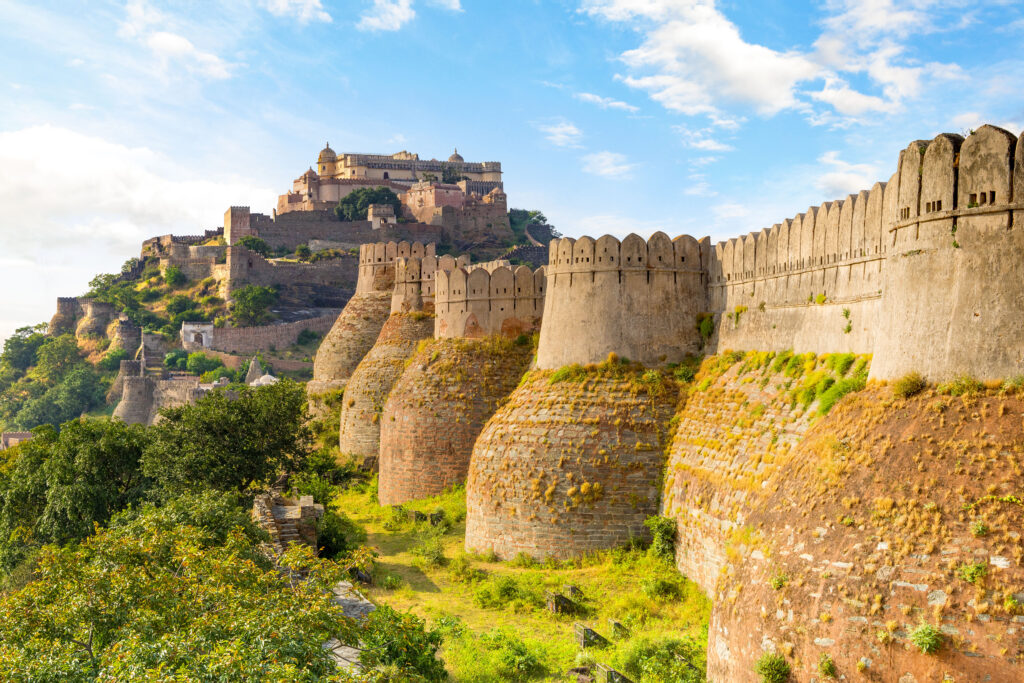
In the heart of the Aravalli mountain range, at the bend of a small country road, stands the fort of Kumbhalgarh, built in the 15th century by King Sisodya Rana Kumbha. Take time to admire its 20-kilometre wall, with its imposing bastions, said to be the second longest in the world, after the Great Wall of China. A little tricky to get to without your own vehicle, the fortress is nevertheless well worth a visit. Its imposing size, its two ancient palaces, its delicate temples and the (still) limited number of tourists make it a most enjoyable getaway.
17. Dharamsala
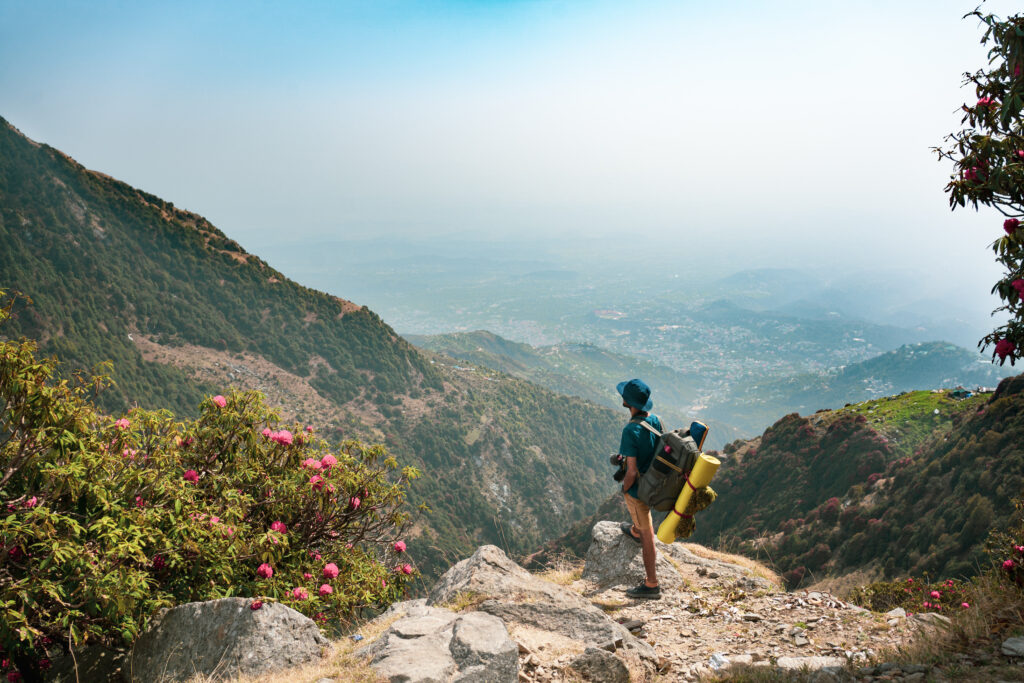
Dharamsala is a lively, colorful city renowned for its natural beauty, Tibetan culture and spiritual atmosphere. A visit to Dharamsala includes the Tsuglagkhang temple, home to the Dalai Lama. The city is also renowned for its natural landscapes, notably the Himalayan mountains, which offer panoramic views of the surrounding region. Hiking enthusiasts can explore the region's trails, and discover the waterfalls, forests and lakes of the area. Dharamsala is also famous for its Tibetan culture, and is home to numerous Tibetan monasteries, schools and cultural centers.
18. What to do in North India? Visit Delhi
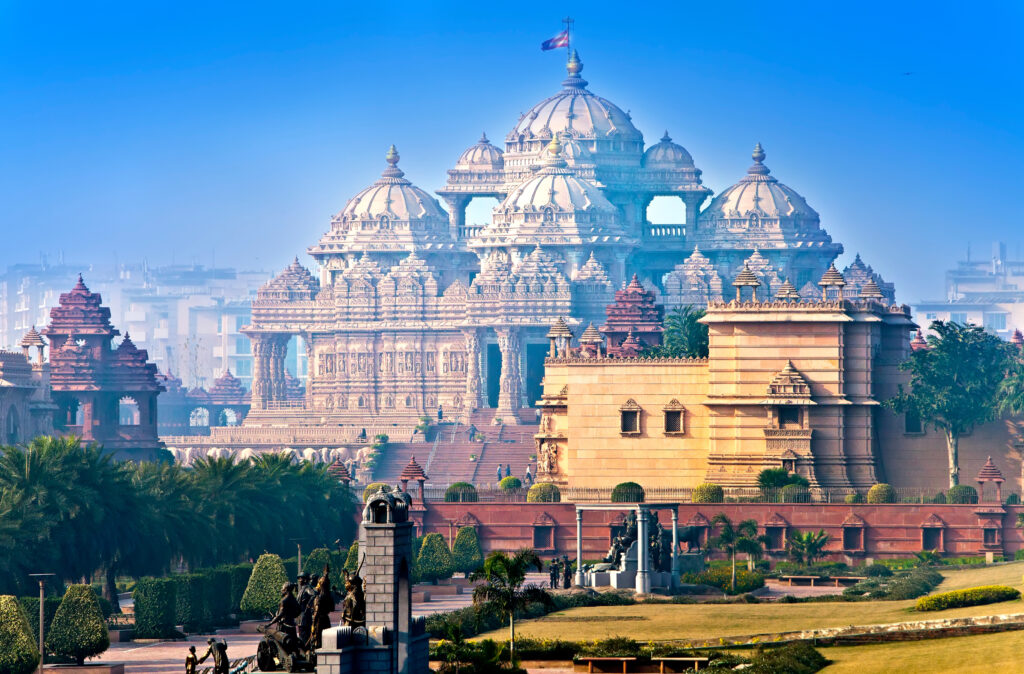
Frenetic, dizzying and dusty, Delhi is a city to discover during your trip that's just like India: colorful and exotic! We recommend that you take the time to discover it, to get to grips with its contrasts. More than 18 million people live here, between winding alleys and airy avenues, spacious gardens and busy markets. The metropolis is divided into two districts: New Delhi, the capital, which houses the country's administrative offices, and Old Delhi, where life is in full swing in the narrow streets. Among the monuments to see, we recommend Humayun's tomb, a mausoleum of Mughal architecture, and Gandhi Smriti, Gandhi's last home.
19. Calcutta (Kolkata)
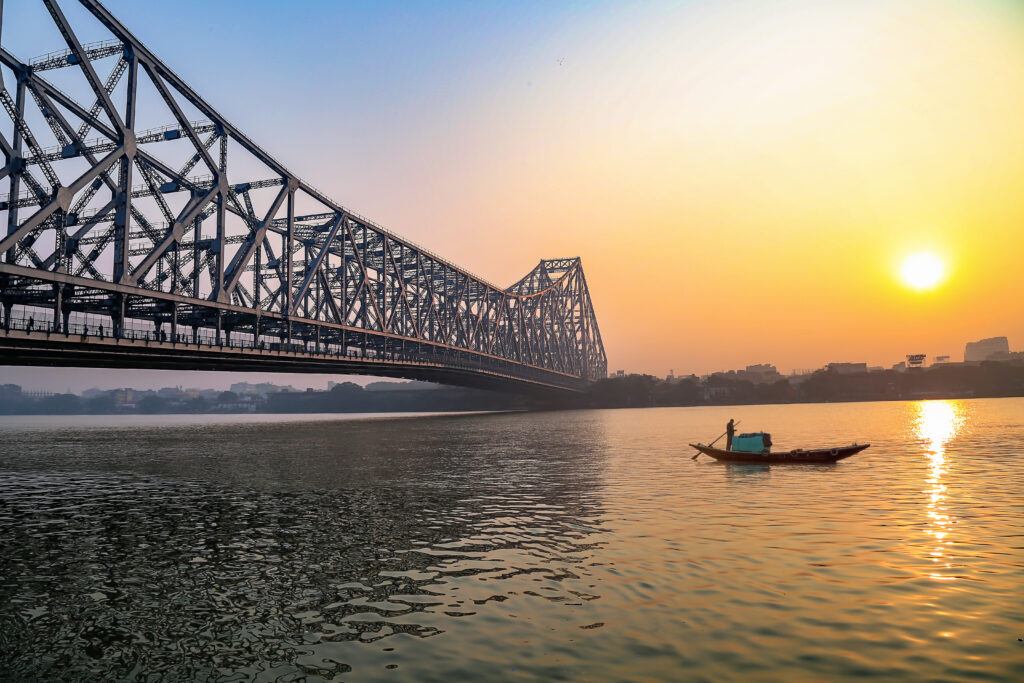
A visit to Kolkata reveals the city's architectural treasures, including the Victoria Memorial, a museum dedicated to Queen Victoria. The museum is a remarkable example of Indo-Saracenic architecture, and houses numerous paintings, sculptures and objets d'art. You can also visit the Dakshineswar Kali temple, dedicated to the goddess Kali, and the Kumortuli district, famous for its pottery workshops, where craftsmen make statues of Hindu divinities. It was in Calcutta that Mother Teresa founded the Congregation of the Little Sisters of the Poor. The Congregation is still active, and you can offer your help to the people in the centers.
The Little Witty's advice for your first trip to North India:
Now you've made up your mind to head for India (one of the cheapest vacation destinations in the world)? For your first trip to northern India, here are a few tips that may come in handy, especially if you decide to try your luck as a backpacker!
- Be prepared for a change of scenery: India is a very different country from Europe, and culture shock can sometimes be quite severe. Be prepared to discover a new culture, different customs and sometimes surprising lifestyles.
- Dress appropriately: India is a conservative country, and it's important to respect local customs when it comes to dress. Avoid clothes that are too short or too tight-fitting, and prefer loose-fitting, covering garments.
- Be careful what you eat and drink: India is a country where food hygiene can sometimes leave much to be desired. Avoid drinking tap water, prefer bottled water, and be vigilant when eating in the street or in unfrequented restaurants.
- Be patient and flexible: in India, things don't always go as planned, and it's important to be patient and flexible. Delays are common, and it's important not to let the unexpected stress you out.
Did you know that India is home to one of the most haunted places in the world? The ghost town of Bhangarh is said to have been cursed by a wise man, condemning it to remain deserted and haunted.
Tempted by a vacation in India? Take advantage of a discount by booking your travel insurance here, and leave with peace of mind! We also recommend our 9-day tour proposal to discover the splendors of North India from Rajasthan to the Hindu holy city of Varanaisi, via the fabulous Taj Mahal.


